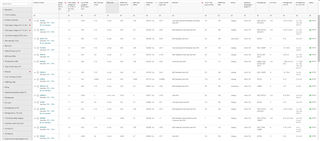Other Parts Discussed in Thread: TLV333, TLV274
My understanding:
Maximum output Voltage swing if G=1 and 0V to +3.3V supply; (OPA335 has Common-Mode Voltage Range VCM (V–) – 0.1 (V+) – 1.5 V)
Would be -0.1 (Perhaps with negative supply) and +1.8V? (3.3V - 1.5V)
Unless one changes the gain to more than 1?
I use it as a buffer to ADC, in multiple channel DAQ, but only see 2.5V on some outputs, and correctly 3.3V on some, if the input reaches 3.3V
Perhaps the rail to rail to the layman is misleading.
So, If I change the part for one with VCM Common-mode voltage range (V–) – 0.1 (V+) + 0.1 V that should solve that problem?
Any help appreciated.



